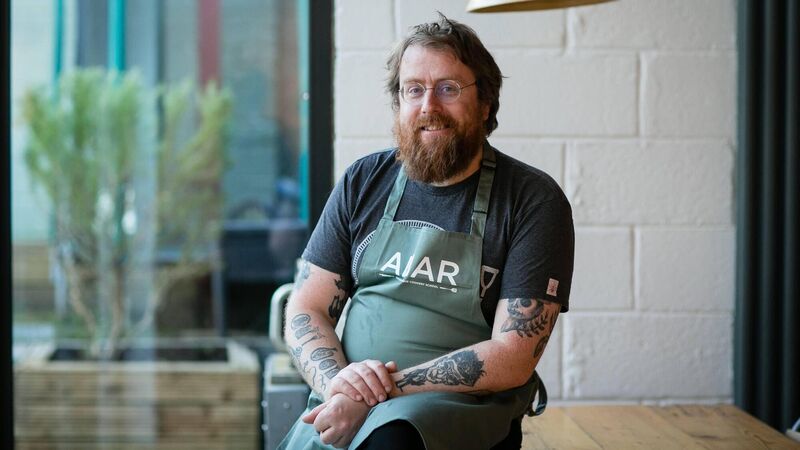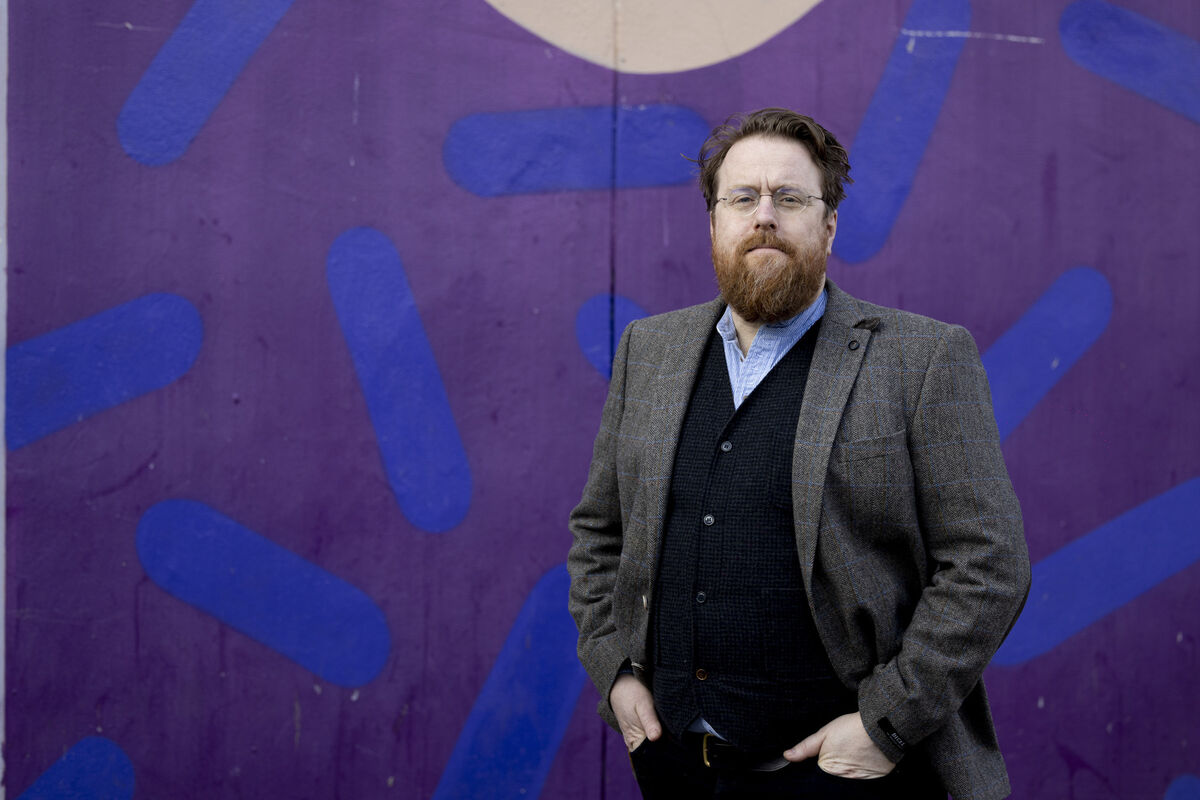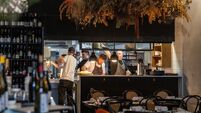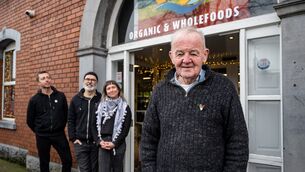Food for thought: Chef JP McMahon's culinary predictions for 2024

Chef JP McMahon of Aniar Restaurant.
Trends emerge as a reflection of our desires, our curiosities, our need to connect.
A reflection of innovation and emulation, they are societal signposts that draw us together.
Trends tend to look to the future, but 2024’s food trends show that we — the farmers, the chefs, the producers and diners — need to continue looking to the past, to tradition and heritage.
Sustainability, ecology and community are the cornerstones of how and what we eat in the year ahead.
1. Plant-based food (made with actual plants)
Nothing annoys me more than fake meat products which seem to be full of everything except vegetables.
The rise of ultra-processed vegan food is not a good sign. I don’t believe the laboratory is the way forward for feeding the planet a healthy and nutritious diet.
One trend that I’m looking forward to is the rise of more plant-based food that is actually made from plants and vegetables. Think beans and legumes as opposed to fake bleeding burgers.
In Aniar, we offer both a 23-course tasting menu for vegetarians and vegans (only using Irish ingredients). It is certainly more popular than it was in the past and is becoming more popular as the years go by.
Restaurants will have to accommodate more plant-based options on their menu, not only for customers but also for the planet.
There are no two ways about it: meat consumption is far more onerous for carbon emissions than vegetables.
Don’t get me wrong: I love a nice Irish steak but we need to find a better balance.
2. Regenerative agriculture
We need a better agricultural system and regenerative agriculture may be the way towards a more sustainable and greener future.
While there is no absolute definition, regenerative agriculture includes practices that increase soil fertility and biodiversity.
Less in opposition to natural forces, the regenerative movement attempts to work in harmony with its natural environment in a more holistic manner by preventing land degradation and deforestation, minimising soil disturbance (such as a no-dig philosophy) and integrating plants and animals on the same farm.
As well as regenerative agriculture, regenerative tourism is going to play a part in how we eat and travel.
Regenerative tourism seeks to ensure travel and tourism reinvest in people, places and nature and that it supports the long-term development of our social-ecological systems.
Indeed, ‘regeneration’ itself might be the biggest trend in 2024.
3. Seaweed
Although buckwheat is tipped to trend in 2024, my money is still on seaweed becoming more a part of our own cuisine as well as other cuisines around the world.
Seaweed is a superfood with high amounts of protein, vitamins, and minerals. Though it’s gold for the Japanese, many of us treat it with scorn.
Seaweed not only cleans the ocean water, it can also be farmed alongside other shellfish which makes it a truly sustainable practice going forward.
We need more seaweed farms in Ireland to not only feed ourselves but also to produce a truly green export.
4. Mindful food and more visible nutrition
While I don’t think we’re at the stage were we can offer yoga after your meal, being more mindful of the food that we cook and eat is rapidly changing our approach to restaurants, workplace catering and dining at home.
“We are what we eat”, as Alice Waters observed in her recent book We are What we Eat: A Slow Food Manifesto (2021).
Being mindful includes being more conscious about the nutritional value of our food as opposed to simply how it tastes.
Fast food may be tasty and convenient but its overconsumption is killing us in terms of its nutritional value and its effect on the planet.
“Fast food culture has become the dominant culture in the United States,” Waters writes, “and it is becoming the dominant culture in the world.”
Expect mindfulness and wellness (which ties in with more plant-based food) to be more present in both your food and its surroundings in 2024.
5. More speciality restaurants and cafés
As our food culture becomes more sophisticated, the line between fine dining and a chip shop is becoming blurred.
This blurring of the boundaries has already happened elsewhere, from London to New York.
As chefs who once worked in fine dining spaces decide to open smaller, simpler restaurants, all of a sudden we have highly sophisticated establishments that might only serve one or two things, such as toasted sandwiches, burgers, and fried chicken.
With the increased cost of food and everything that goes with it (from light and heat to rent and wages), restaurants and cafés will have to adapt to provide a more cost-effective and financially sustainable model.
Simpler, smaller and more specialist menus are one way of combatting increasing costs.

6. More technology in/with our food
As data-driven systems become a bigger part of our lives, we should expect more smart technology entering into our food system, both in the way that we order food and the way that we consume it.
Eating in the age of AI is going to be a big change, though I’m not sure exactly how this is going to happen.
Augmented reality (AG) could become a feature of experiential dining. It already is in some select places where the design on both the walls and the table changes with each course for an immersive dining experience.
Some takeaway restaurants already hold data on your ordering preferences that helps create a bespoke experience.
I’m not sure if 3D menus will take off but smart menus, where you scan the item to view an image, information, and providence are certainly on the way.
7. Sustainability
Despite the greenwashing around sustainability, many restaurants are attempting to become more efficient in relation to their environment.
At this year’s Food on the Edge, Elena Reygadas, one of the world’s leading Mexican chefs, spoke about the role of chefs as “interpreters” of the natural world.
Creating a deeper connection between what we do as chefs and what happens in the natural world is becoming more and more important.
It is no longer enough to cook and choose to order food from wherever one wants without considering the impact it has on the environment.
The transportation of food around the world is one of the leading causes of climate change and we need to look closer to home and find alternatives for all the produce we unnecessarily import.
8. Greater experiential dining
Eating out is a cultural act and all eating is necessarily an experience. But some restaurants go beyond the usual format to offer customers a more holistic experience with the food playing just one part of the overall event.
We’re all used to our food coming with stories nowadays (often linked to the chef or the producers) but I think personal storytelling is going to expand beyond the world of fine dining into more casual spaces.
With more people learning the Irish language, we should expect more engagement with Gaeilge, from simply ordering to whole dining experiences that revolve around the language and its history.
9. Greater alternatives to alcohol
We may still have issues with our attitude to alcohol consumption in Ireland but there is a growing change in the country towards better alternatives for non-drinkers or people simply wanting an alcohol-free night out.
I have enjoyed great juice pairings in some of the best restaurants in the world (it’s something we offer now in Aniar) and while I love my wine I really didn’t notice the absence of alcohol.
Better alternatives mean more mindful seasonal drinks with a touch of the local about them: think apple and dillisk juice or beetroot juice and woodruff.
We need to put as much effort into our juice menu as we do into our wine menu (in the same way that we have to put more effort into our vegan and vegetarian dishes).
10. Sophisticated home dining and more online experiences
Covid changed the way in which we eat and work. While many home dining options are not as available as they once were, I believe the increased cost of doing business in larger cities will see a return to more home dining and online experiences.
Private online cooking classes as well as group classes are making a comeback. I don’t believe they will replace the actual experience but rather supplement it, particularly if people cannot travel.
Imagine a pasta class in Italy in the morning followed by a demonstration from Peru from one of the world’s best chefs: online of course.
Online experiences can help us cut down on our air miles while still tapping into a country’s rich culture.
Of course, it won’t replace real travel but perhaps if we replaced one of our many trips abroad with an online experience or virtual cooking class the world may be a better place.

Subscribe to access all of the Irish Examiner.
Try unlimited access from only €1.50 a week
Already a subscriber? Sign in







